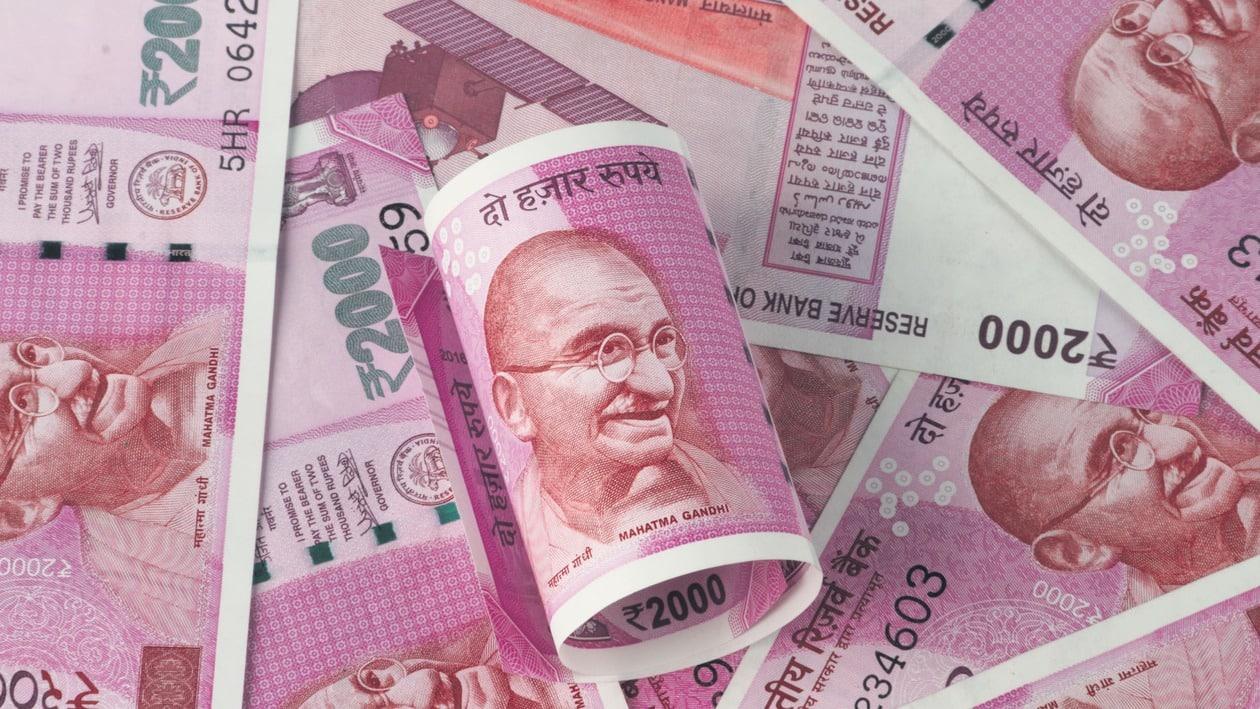The Reserve Bank of India (RBI) on Friday made a surprise announcement to withdraw ₹2000 currency notes from circulations by 30th September, 2023. However, the central bank clarified that these notes will continue to remain legal tender.
As per experts, this move was unexpected and grabbed headlines, as it felt like demonetisation déjà vu to some. The reasons by RBI for the gradual withdrawal of ₹2,000 denomination currency notes include (i) not commonly used for transactions, (ii) adequate stock of banknotes in other denominations to meet the currency requirement of the public, and (iii) about 89 percent of the ₹2,000 notes issued prior to March 2017 (post DeMon as part of measures to combat counterfeit currency), thus nearing the end of estimated lifespan of 4-5 years.
However, in a recent note, brokerage house Emkay pointed out that, unlike the November 2016 demonetisation episode of overnight scrapping of then-existing currencies’ legal status, the present ₹2000 notes will continue to remain as legal tender. Thus, this move cannot be compared to demonetisation.
"A similar move was taken in January 2014, where the RBI advised that banknotes issued prior to 2005 would be withdrawn gradually, and the process was done smoothly over the stipulated time. While the RBI encourages people to deposit/exchange ₹2,000 denomination banknotes held by them by September 30, 2023, there is no clarity on the status of the currency afterward. However, it could lead to some panic-driven move to exchange/deposit/spend ₹2,000 notes — refreshing the demonetisation memories to some extent," it said.
The brokerage further informed that as of March-end 2023, ₹2,000 notes in circulation constitute ₹3.62 lakh crore or 10.8 percent of notes in circulation (NIC) vs ₹6.73 lakh crore at its peak in March 2018 (37.3 percent of NIC). Besides, improved digitization and a much lesser amount in circulation will limit the adverse impacts on small businesses, it added.
However, this move will increase the liquidity to some extent as Emkay also believes some parts of the notes:
(1) May be exchanged for a lower denomination, and thus will be liquidity neutral.
(2) Some of the new deposits in lieu of ₹2,000 notes may be temporary in nature and may be drawn immediately in cash thereafter as part of the precautionary currency demand and, thus, will be liquidity neutral.
(3) A portion of the otherwise difficult-to-transact ₹2,000 notes may be with the public for circumventing the taxation route and may not find its way back into the banking system but instead be spent on high-end consumer durables/gold/or even real estate.
Liquidity
Nonetheless, this action will be net liquidity positive. As per the brokerage, most ₹2,000 notes are likely to be initially deposited with banks which will improve the deposit base and, thus, system liquidity by as high as ₹1.4-1.6 lakh crore.
Assuming a new sticky deposit base of 20-30 percent of the ₹3.62 lakh crore, the durable liquidity impact could range from ₹0.7-0.9 lakh crore, estimates Emkay. This liquidity addition through a new deposit base would ease off some liquidity pressure and, thus, may moderate (but not eliminate) the need for durable liquidity addition by the RBI in the form of OMOs/CRR cut in the latter part of FY24, it said.
Bonds likely to steepen
The brokerage also expects the shorter end of the curve to rejoice the liquidity inflow and SLR demand from banks, while the longer end will likely rise as markets re-adjust their OMO purchase expectations for H2FY24. However, this will also be contingent on the durability and pace of deposit accretion, which will determine the need and quantum of RBI’s intervention to manage liquidity, in line with its stance, added the brokerage.
However, the fall in overnight rates could also put further downward pressure on forward premia, making the cost of carry for INR lower, thus pressuring INR to some extent, fears Emkay. Depending on the extent of the liquidity glut, the RBI may do FX swaps to increase premia, it further stated.
Meanwhile, Jateen Trivedi, VP Research Analyst at LKP Securities, also stated that RBI's removal of the highest denomination currency note of 2000 and concerns about the debt-ceiling negotiations in the US have impacted the rupee. As long as it remains below 82.50, the rupee is likely to continue its weakness and the expected range for the rupee is 82.70 to 83.05, he forecasted.
Temporary consumption boost
While this move will benefit banks (lower NIM amid higher deposit base and consequent easing banks’ deposit costs), the brokerage noted that a consumption boost may also be felt, as the unaccounted income might find its way to fuel demand for high-value consumption durables, precious metals and real estate.
